How can I explain this unique (or curious) notebookPC produced by John Karidis who disigned "ThinkPad701 (that is known with its 'Butterfly keyboard')"....?
It's a complex (or chimera) of "ThinkPad240" and "Cross pad digital note pad" and was expected to contain mysterious productibity for "presentation manager" or "Idea processor"....but was not achieved sufficiently.
|
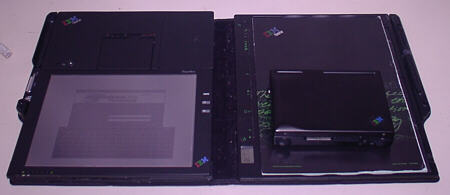 |
I think TransNote is the hugest notebookPC in the world when it is opened. The size is A3 file size.
Can you imagine how big it is, compared with PalmTopPC110(A6 size).....
|
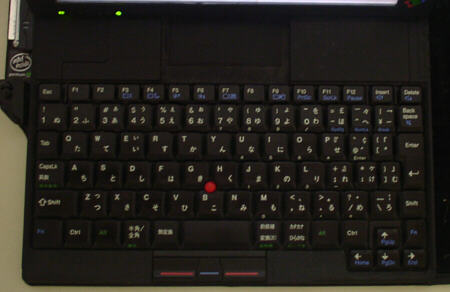 |
TransNote's keyboard.
It's similar to the k/b of "ThinkPad240". I don't like that unequal pitch key in 3row from right side.
|
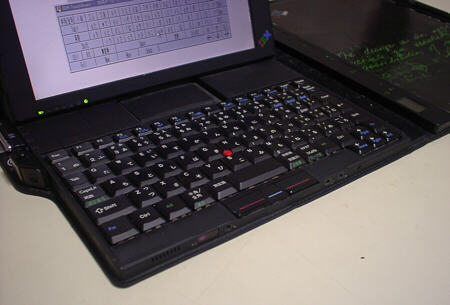 |
The keyboard section is very thin, but for many lateral frame is under the keyboard, it's easy to touch.(see below)
|
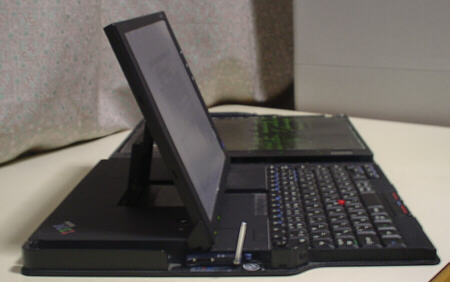 |
|
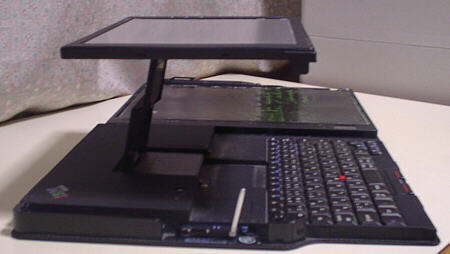 |
|
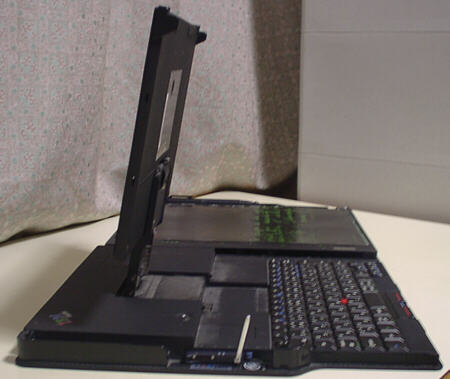 |
TransNote has TFT touch panel.
TransNote's TFT panel can flip to behind so that the people face to face with PC operator can see the panel.
|
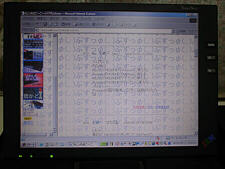 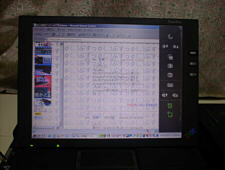
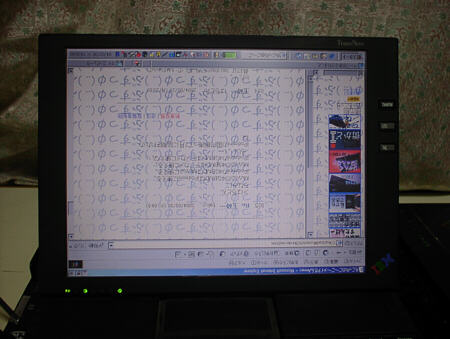 |
With the flip of panel, you can manually turn the display upside down with TransNote utility.
But the video performance decreases when you turn the display. So it's difficult to play DivX/MPEG-4 movies smoothly.
|
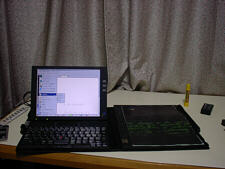 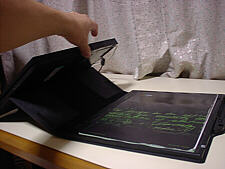
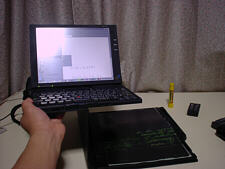 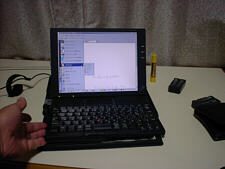
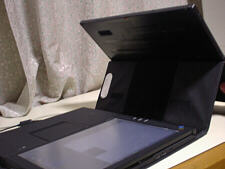 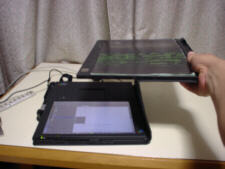
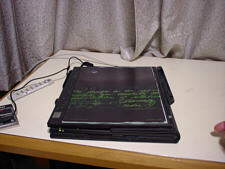 |
TransNote has "FlexFold" body, that can be folded and take multi function styles both tabletPC and Digital notepad.
|
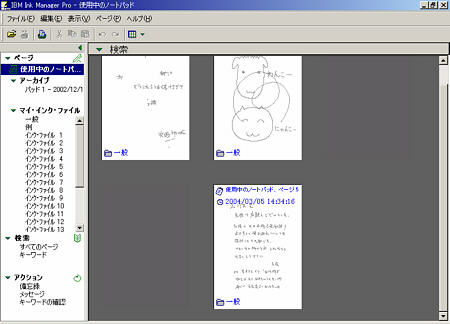 |
|
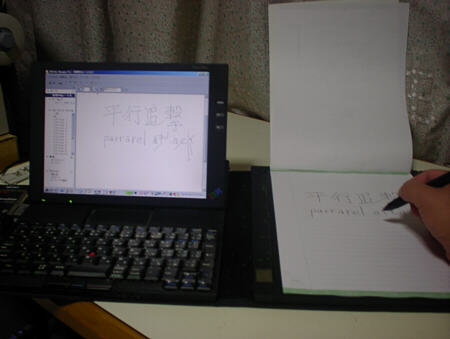 |
"ThinkScribe digital notepad" of TransNote can caputre what you write on the paper on that pad with magnetic stylus ball-point pen simaltenously.
This is the window of "IBM ink manager Pro".
I bought TransNote to be planning to use this as a "Carte manager" of my patient(I'm an acupancturist and massager). But "Ink manager" can't use a template , so I've not used it for that purpose now.
I hear some mathematic professors use it for the presentation manager on their lecture to the students, because mathematic symbols are difficult to express either text or picture, but it's easy to write their hands.(After the lecture, they can upload the records as PDF files). I think it's one of the best usage of TransNote.
|
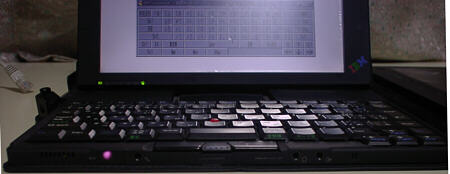 |
Front panel of TransNote.
From left to right, there are IrDA I/F(115.2kbps;the point that glows in purple), Mic jack, Headphone jack, Line in jack and Mic slit.
|
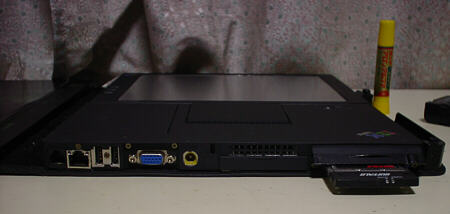 |
Back panel of TransNote.
From left to right, there are Analog Modem jack(RJ-11), 100base-TX(RJ-45), USB1.1, VGA, AC/DC and PCMCIA I/F.
The slit left side of PCMCIA is an air dact for CPU fan. 2.5inch 9.5mm HDD is installed over the PCMCIA I/F.
|
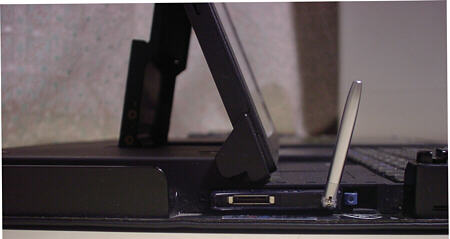 |
Left side of TransNote.
This is Type2 CompactFlash I/F.
There is a battery bay on right side of PC section.
|
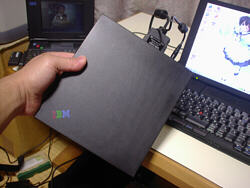 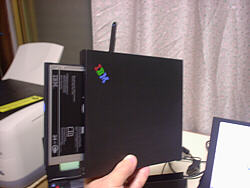
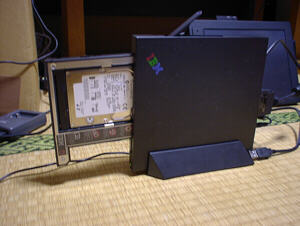 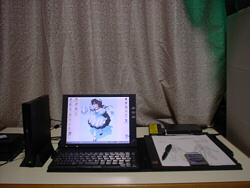 |
-Options by IBM for TransNote #1-
Portable device bay2000(PDB2000) is available when installing or restoring the system to TransNote. I works bootable device when you connect it with PCMCIA I/F card.
It apply to the devices for "Ultra device bay2000", like HDD bazel or CD-ROM drive and so on.
I think few Japanese say "It's portable"......
|
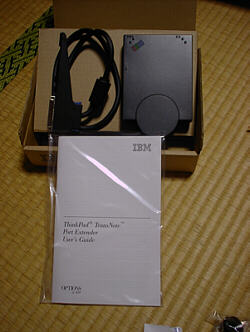 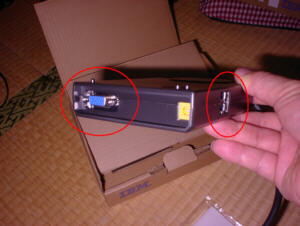
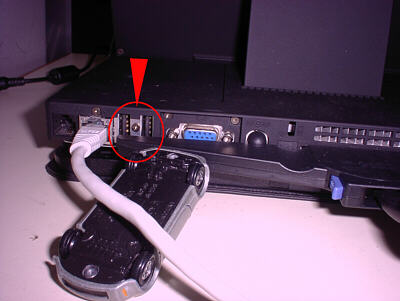 |
-Options by IBM for TransNote #2-
Port extender can connect to the extenshion I/F on back panel of TransNote.
It has 2 USB I/Fs and VGA I/F, but when you connect this extension tool on TransNote, it closes the USB I/F on TransNote....I heard it is a "Spacification".
I think this device is of no use but only "extension cord".....
|
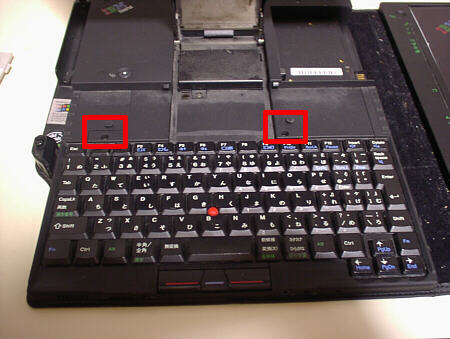 |
Some TransNote users have trouble that the system suddenly fall down and never boot up. It may be caused a corrosion of systemboard by fluid from Li-ion sub battery.
You'd better beware of the battery. It's under the keyboard.
TransNote's keyboard is fastened by 2 screws over the k/b. They're covered with rubber caps(within the red square).
|
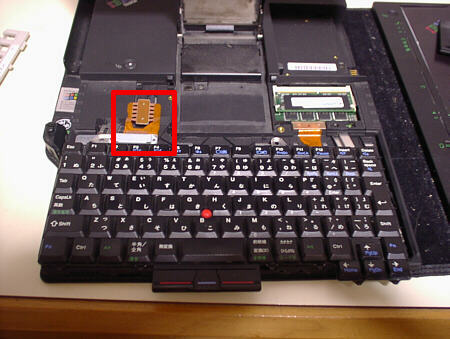 |
when you Loosen the screws and remove the plastic cover on both sides, the flexible cable and connector from k/b appears. Then put off this and lift up the k/b carefully(k/b has some metal hooks).
|
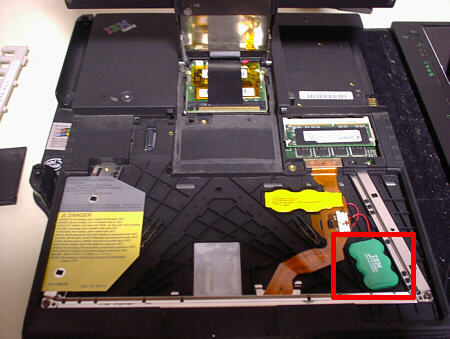 |
There are two batteries under the k/b. The green one (within red square) is easy to corrode. The normal voltage of this battery is about to 7V.
The small device on The root of LCD panel pillar is "MiniPCI" card. My TransNote is installed "56Kbps Modem/100base-TX combo card".
|
Others:
|
| IBM in town |
| My ThinkPads |